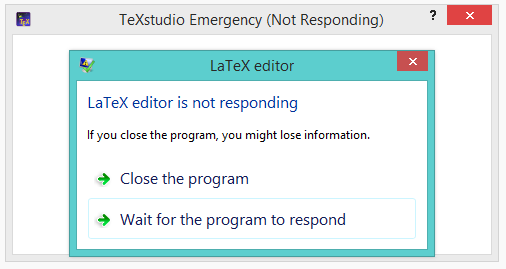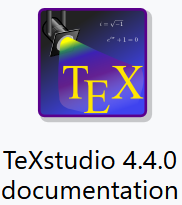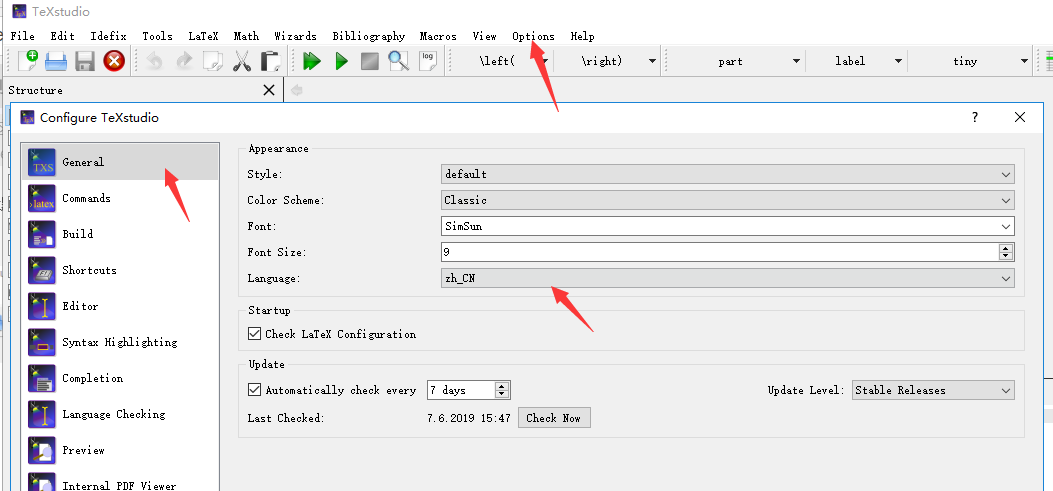

This information is used for package name completion and to warn you if you try to import a package that is not installed. TXS tries to determine the LaTeX packages installed on your system. So most likely you will just have the basic tex.cwl activated statically. However, nowadays this is not necessary in most cases because of the automatic loading based on \usepackage. In early versions of TXS this was the only way to load cwls. This means you usually don't have to care about which cwls are loaded.Īdditionally, you can statically activate cwls at Options -> Completion.
TEXSTUDIO GITHUB CODE
This results in the corresponding code between \begin command, it will try to load packagename.cwl for the context of the current document. You can define an environment, say foo and set its type either to verbatim or numbers. This is an unfinished feature with yet little capability: Maybe you've found the Custom Highlighting section in the options. ini file texstudio -ini-file /tmp/randomfilename, it will temporarily use the default settings, without changing your normal settings. If you start TeXstudio with a non existing. You can also just let it use another settings file with the -ini-file option. You can go back to your settings by deleting the newly created texstudio.ini and renaming the backed-up. If you only want to restore the default settings temporarily, rename texstudio.ini (e.g. Otherwise it will recreate the file with the present settings on closing. Note: This has to be done, while TXS is not running. Just delete the settings file ( texstudio.ini). Otherwise the changes won't have any effect and will be overwritten when TeXstudio is closed. Note: TeXstudio has to be closed while editing texstudio.ini. The resulting report contains a section called "Setting file". ( Older versions Check LaTeX Installation.
TEXSTUDIO GITHUB PORTABLE
Portable Version: config/texstudio.ini relative to the TeXstudio executable.Windows: %APPDATA%\texstudio\texstudio.ini.Linux/Unix/Mac: ~/.config/texstudio/texstudio.ini.The settings are stored in a file called texstudio.ini. Linux users can easily compile TXS themselves. Be aware that only logged-in users see the artifacts. We provide development snapshots with every commit. If you are interested in the latest features, you can try a development version (no warranty for stability and correctness).


Therefore it's hard to predict release dates. Since it's a project we develop completely in our spare time, the time we can invest may strongly vary. The added features have to be complete and sufficiently tested. \usepackage:ame placeholder.There is no fixed release schedule for TXS. Don’t forget to set the same encoding in the TeXstudio” -> “Editor” -> “Editor Font Encoding”) if you don’t You may change the default encoding for new files (“Configure Show always the structure of the “master” document if one is setĪutomatically restore the previous sessionĪnd to store session paths relatively which allows easier moving of files/projects The use of system dialog instead of the qt dialog The language of the menus can be changed directly to ignore system settings. Modern variant is closer to texmaker, “Orion Dark” and “Adwaita Dark” provide a dark mode. The “style” and “color scheme” of TeXstudio can be selected. This panel allows the setting of some general aspects. They can be moved by dragging the handler on the left-hand side. The toolbars can be hidden by a right click anywhere on the toolbar area. The side panel and the log panel may be hidden with a control on the lower-left edge of the main window. Visible if you toggle “Show advanced options” in the lower left More advanced or less often used options are only
TEXSTUDIO GITHUB MAC OS
“Options” menu (“Preferences” under Mac OS X). Some options are directly available in the GUI via context menus, see here, others are available with the “Configure TeXstudio” command in the TeXstudio can be adapted in a wide range. Toggle table of contents sidebar Configuring TeXstudio #


 0 kommentar(er)
0 kommentar(er)
